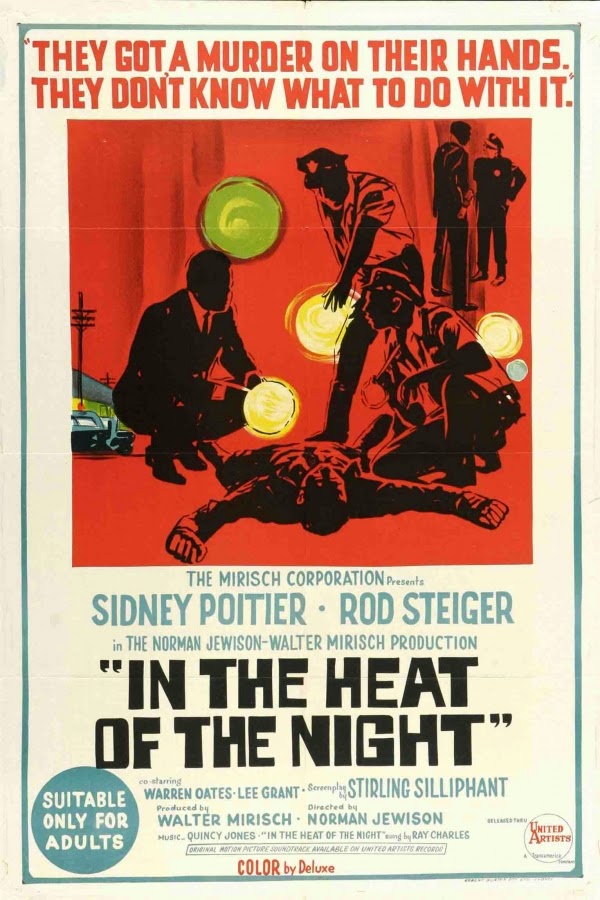For my fourth entry of influential films throughout the decades, I will be examining the impactful film In the Heat of the Night, directed by Norman Jewison. While the film is beloved by avid film enthusiasts, I would argue that the movie is becoming increasingly lost in the sea of media, for I myself had never seen or heard of the film until about 2 years ago. Regardless, I hope that this post persuades you to see this incredibly important film, for it was one of the first Hollywood movies to cast an African American lead as the hero, and it was released during the Civil Rights Movement in the United States.
You can view the movie trailer here, however I will briefly summarize the plot in case you are unfamiliar with the story or need a refresher.

Sidney Poitier stars as Virgil Tibbs, a Philadelphia police detective who is mistakenly arrested on suspicion of the murder of Philip Colbert, a wealthy man from Chicago who was planning to build a factory in the rural town of Sparta, Mississippi. Bill Gillespie (played by Rod Steiger), the racist police chief of the small and racially hostile town picks up Tibbs at the train station and, after taking him to the police station, quickly jumps to the conclusion that he is the murderer due to the large amount of cash in his wallet. Gillespie, who is heavily prejudiced against Black people, is embarrassed to learn that Tibbs is a respected Philadelphia homicide detective who was in town visiting his mother. After the unfair and racist treatment he received, Tibbs is anxious to leave Sparta as quickly as possible, but his captain from Philadelphia instructs him to stay and help with the investigation of the murder. Gillespie is reluctant to accept his help due to his racist ideology and arrests another innocent man on insufficient evidence. After Tibbs proves the man to be innocent, the victim’s wife is impressed by Tibbs’ expert ability and threatens to stop construction on the much-needed factory unless Tibbs leads the investigation. Under orders by the town’s mayor, Gillespie convinces Tibbs to help with the investigation and the two gradually come to respect each other as they are compelled to work together to solve the crime.

I will not spoil how the movie ends if you have not seen it because it’s worth the watch.
The film is a 5-time Oscar Winner including Best Picture, Best Actor in a Leading Role (Rod Steiger), Best Writing and Screenplay Based on Material from Another Medium, Best Sound, and Best Film Editing. These are just five of its many accolades throughout the award events, but it was the film’s honest depiction of the raging racial discrimination within the country at the time that contributed to its praise from critics. While the nation, and the world for that matter, has come a long way from the 1960s in terms of civil rights, the film continues to be applicable today within rural areas in particular. It is films like In the Heat of the Night that keep our nation’s unpleasant history with racial discrimination in the limelight so that we cannot regress on the hard-earned progress.
Great post! I really liked your incorporation of images as well as your organization of this post! Keep up the great work 🙂